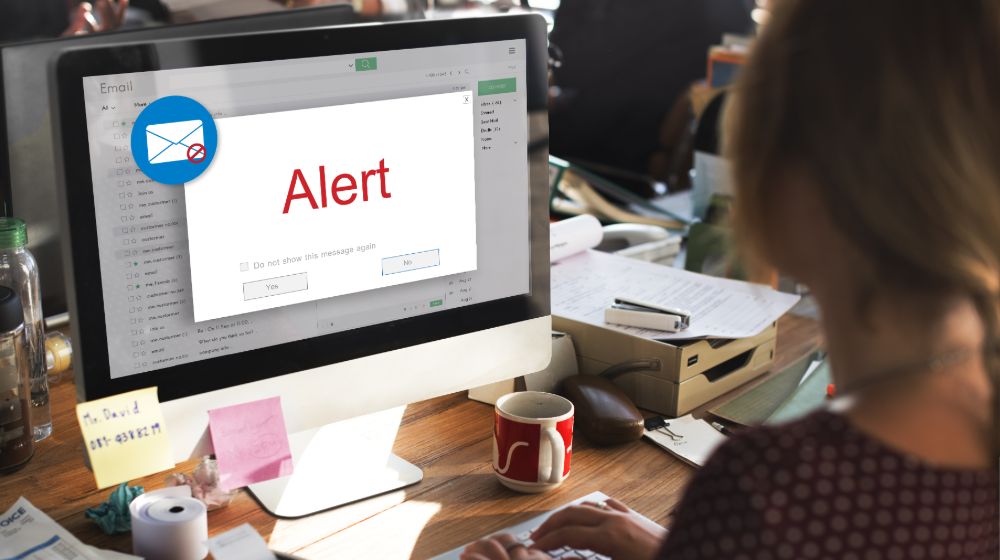Popular
Creating Emergency Weather Email Alerts

Unexpected severe weather can be a big problem for the unprepared survivalist. Make sure you're always ready for weather-related disturbances by setting up your very own emergency weather alerts.
RELATED: Severe Weather Survival Tactics You Need To Know
How to Set Up Your Emergency Weather Alerts in 4 Easy-to-Follow Steps
Step 1: Visit the Website of The Weather Channel

The Weather Company, more famously known as The Weather Channel, is an information technology and a weather forecasting company. They own and operate one of the most famous weather forecasting websites called weather.com.
Start by visiting their website so you can register for their weather alerts service.
Step 2: Go to the Weather Alerts Section

In the Alerts section, you will see several options for the types of weather alerts you would like to receive. Unlike most of the other weather forecasting websites, weather.com provides numerous options to choose from.
You can set these alerts for those that are specific to your needs. These include the following:
- Severe weather alerts
- Daily forecasts
- Daily current conditions
- Rain alerts
- Snow alerts
- Icy precipitation alerts
- Extreme heat alerts
- Pollen alerts
- Daily surf and sea conditions
Pollen alerts, for example, are useful for gardeners, as it measures the grains of pollen per cubic meter of air or how much pollen is in the air. It is also great for those diagnosed with seasonal allergic rhinitis, as pollen can be one of the triggers of their allergies.
Daily surf and sea conditions also tell you the heights of waves, wind and tide conditions, and swell direction specific to your area.
Furthermore, you can also check what weather conditions fall under the “severe weather alerts” section by clicking the link. This includes warnings for conditions such as coastal flood, hurricane, ice storm, tornado, blizzard, severe thunderstorm, and many more.
Once you're done choosing the types of alerts you want to sign up for, enter your location in the field marked with “Enter US City or ZIP.” This tells the website to give you alerts that are relevant to your location.
RELATED: How To Read The Weather And Make Your Own Forecasts
Step 3: Verify Your Personal Information

Next, register your weather.com account. Enter your email address and provide a secure password to use. This email address will also be the default recipient of the weather alerts you signed up for on the previous page.
You also have the option to receive text messages on your mobile device. Input your mobile number in the field under “Wireless Text Delivery Address.” You will also have to verify your age by choosing the year of your birth in the drop-down menu under “Year of Birth.”
Finally, review the terms and conditions of your account registration before proceeding. Check whether you want to sign up for emails notifying you of special offers on the products and services of The Weather Company and its third-party sponsors.
This is completely optional, though most companies typically try to sneak them into the account registration process. Untick the box if you do not want to receive many emails from them apart from the weather alerts you signed up for.
Step 4: Monitor Your Account

There it is! You're almost done. Once you click “Continue,” it should bring you to your account's homepage. Here you'll see the weather alerts you signed up for, the contact points you added, such as your email and mobile number (if you provided it), as well as the location for which you'll receive alerts.
Your homepage is also where you'll be able to edit your settings for every alert you choose. You'll be able to choose where you'll receive each of the alerts as well, whether it be through your mobile or your email, or both.
You can also add new alerts if necessary, change your location, and even signup for desktop alerts.
Now that your weather alerts are all set, teach your kids to prepare for severe weather-related disasters with this video courtesy of FEMA:
There you have it! Set up emergency weather alerts on your email and mobile, so you're always prepared for severe weather-related disasters.
[poll id=”93″]
Do you have other questions about how to set up your own emergency weather email alerts? Ask them in the comments section below!
Up Next:
- The ONLY Hurricane Survival Guide You Need
- Tornado Survival Tips: How To Survive Natural Disasters
- 25 Ways To Get Clean Drinking Water In An Emergency
Calling all preppers, craftsmen, bushmasters, outdoorsmen, and all-around skilled people, Survival Life needs YOU! Click here if you want to write for us.
Don’t forget to stay connected with us on Facebook, Twitter, Pinterest, and Instagram!
-

 Paracord Projects1 year ago
Paracord Projects1 year agoParacord Projects | 36 Cool Paracord Ideas For Your Paracord Survival Projects
-

 Paracord Projects1 year ago
Paracord Projects1 year agoHow To Make Paracord Survival Bracelets | DIY Survival Prepping
-

 Medical Care1 year ago
Medical Care1 year ago21 Home Remedies For Toothache Pain Relief
-

 Knife Laws1 year ago
Knife Laws1 year agoAre Switchblades Legal? Knife Laws By State
-

 Do It Yourself1 year ago
Do It Yourself1 year agoSurvival DIY: How To Melt Aluminum Cans For Casting







You must be logged in to post a comment Login